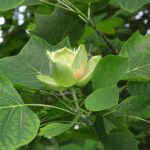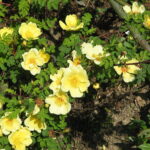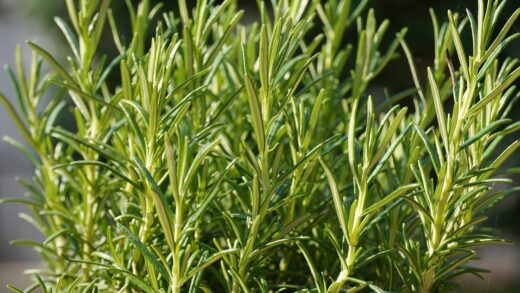The wintering of the American tulip tree

The American tulip tree, native to the eastern United States, is a remarkably hardy species, well-adapted to withstand the rigors of cold winter climates. Once established, mature trees typically require no special protection to survive freezing temperatures, snow, and ice, having developed thick, insulating bark and a deep, extensive root system. However, the situation is quite different for young, newly planted trees. During their first few years in the landscape, they are much more vulnerable to winter damage. Providing appropriate care and protection during this critical establishment phase is essential to ensure they not only survive the winter but emerge in the spring ready for vigorous growth.
A primary concern for young tulip trees during winter is the risk of frost cracking, also known as sunscald. This phenomenon occurs on cold, sunny winter days when the sun warms the southern or southwestern side of a young tree’s thin bark. This warming can cause the cells to break dormancy, but when the sun sets or goes behind a cloud, the bark temperature plummets rapidly, killing the active cells and causing the bark to crack and split vertically. These wounds can create entry points for diseases and insect pests. To prevent this, it is highly advisable to protect the trunks of young trees for their first two to three winters. Commercial tree wraps, made of paper or plastic, can be wrapped around the trunk from the base up to the first set of branches. This wrap should be applied in late autumn and removed promptly in the spring to prevent it from constricting the trunk as it grows.
Another significant threat to young trees in winter is moisture loss, or desiccation. Even though the tree is dormant, its branches and trunk are still exposed to the elements. Cold, dry winter winds can strip moisture from the twigs and buds at a time when the frozen ground prevents the roots from absorbing any water to replace it. This is particularly stressful for newly planted trees whose root systems are not yet fully developed. To mitigate this, ensure the tree is well-watered throughout the autumn, right up until the ground freezes. A deep watering in late fall after the leaves have dropped will help to fully hydrate the tree, giving it a reserve of moisture to draw upon during the winter months. Applying a 3- to 4-inch layer of mulch over the root zone also helps to insulate the soil, reduce moisture loss, and prevent deep freezing of the roots.
Damage from rodents and other animals can also be a problem for young tulip trees during the winter. When other food sources become scarce, rabbits and voles may gnaw on the tender bark at the base of the trunk, often girdling the tree completely and killing it. To protect against this, you can install a physical barrier around the base of the trunk. A cylinder made of hardware cloth or a rigid plastic tree guard is very effective. This guard should be tall enough to extend above the expected snow line and should be slightly buried at the base to prevent animals from burrowing underneath. Be sure to leave a small gap between the guard and the trunk to allow for air circulation.
Finally, while the American tulip tree has a strong central leader, its wood can be somewhat brittle, and heavy loads of snow or ice can sometimes cause branches to break. This is more of a concern for mature trees but can also affect younger ones. After a heavy, wet snowfall, it can be beneficial to gently brush some of the snow off the branches with a broom to reduce the weight. However, never try to remove ice from an ice storm, as the branches are frozen and extremely brittle at this point. Attempting to remove the ice will almost certainly cause more damage than it prevents. The best defense against this type of damage is proper structural pruning when the tree is young to encourage strong branch attachments.
More articles on this topic
Dormancy and cold hardiness
The American tulip tree’s ability to survive cold winters is rooted in its natural process of dormancy. As autumn approaches, shortening daylight hours and cooling temperatures trigger a series of physiological changes within the tree. It begins to slow its metabolic processes, halts new growth, and starts to transport sugars from the leaves down into the roots and woody tissues for storage. This process culminates in the shedding of its leaves, which is a crucial adaptation to reduce water loss during the winter when the ground is frozen. This period of rest, or dormancy, is essential for the tree’s survival, allowing it to conserve energy and withstand freezing temperatures.
Cold hardiness in the tulip tree is not a static state; it is a gradual process of acclimation. As temperatures drop incrementally throughout the autumn, the tree slowly adjusts. The cell walls become more permeable, and the chemical composition of the cell sap changes, increasing the concentration of sugars and other solutes. This effectively acts like a natural antifreeze, lowering the freezing point of the water within the cells and preventing the formation of damaging ice crystals. This is why a sudden, early deep freeze in the fall can be much more damaging to a tree than even colder temperatures in the middle of winter after it has had ample time to fully acclimate.
The tree’s hardiness is rated for USDA zones 4 through 9, meaning it can typically withstand minimum winter temperatures ranging from -30 to -20 degrees Fahrenheit once it is fully established. However, this hardiness can be influenced by the tree’s overall health. A tree that was stressed during the growing season by drought, nutrient deficiencies, or disease will enter the winter in a weakened state and will be less able to withstand cold temperatures. This underscores the importance of providing good year-round care to ensure the tree has the resources it needs to properly acclimate and survive the winter.
During dormancy, the tree may appear lifeless, but it is not. Its metabolic rate is simply very low. The stored energy in its roots and woody tissues is what will fuel the initial burst of growth when spring arrives. The winter dormancy period is a required part of the tree’s life cycle. Many temperate-climate trees, including the tulip tree, have a “chilling requirement,” meaning they must experience a certain number of hours of cold temperatures before their buds will break dormancy properly in the spring. This mechanism prevents the tree from being fooled into leafing out during a brief warm spell in the middle of winter, only to have its tender new growth killed by a subsequent frost.
More articles on this topic
Mulching for winter protection
Applying a layer of organic mulch around the base of an American tulip tree is one of the most beneficial practices for winter care, especially for young trees. Mulch acts as a protective blanket over the soil and the root system. Its primary benefit in winter is to insulate the soil, moderating the extreme fluctuations in soil temperature. By keeping the soil temperature more stable, mulch helps to prevent the repeated freezing and thawing cycles that can heave the soil and damage the fine, shallow roots of a newly planted tree. This insulation also protects the roots from the deep, penetrating cold of a severe freeze.
The type of mulch used is important. Organic mulches such as wood chips, shredded bark, pine straw, or chopped leaves are ideal choices. These materials not only provide excellent insulation but also slowly decompose over time, adding valuable organic matter and nutrients to the soil. A layer of 3 to 4 inches is generally recommended. It should be spread evenly over the root zone, which for a young tree extends at least a couple of feet out from the trunk in all directions. As the tree grows, the mulched area should be expanded outward to cover as much of the area under the canopy as possible.
Proper application of mulch is crucial to avoid causing other problems. It is very important to keep the mulch from being piled up directly against the trunk of the tree. A small, mulch-free zone of a few inches should be maintained around the base of the trunk. Piling mulch against the bark creates a constantly moist environment that can lead to bark decay, fungal diseases, and canker formation. It also provides a hidden, protected environment for rodents like voles to nest and chew on the bark during the winter, which can be fatal to the tree.
In addition to temperature moderation, a layer of mulch also helps to conserve soil moisture. Even in winter, the soil can slowly lose moisture, especially in windy, exposed sites. A layer of mulch acts as a barrier, reducing evaporation and helping to ensure that the moisture from melting snow or winter rain is absorbed into the soil rather than running off the frozen surface. This helps to keep the tree’s roots hydrated throughout the dormant season, reducing the risk of winter desiccation and ensuring the tree is in good condition to begin growing in the spring.
Preparing the tree for dormancy
The preparations for a successful winter begin long before the first frost arrives. The care provided to the American tulip tree throughout the late summer and autumn has a direct impact on its ability to harden off properly and survive the cold. One of the most important steps is to cease all fertilization by mid-summer. Applying nitrogen-rich fertilizer late in the season can encourage a flush of new, tender growth that will not have sufficient time to mature and harden before winter sets in. This succulent growth is extremely susceptible to frost damage and can be a significant drain on the tree’s energy reserves.
Watering practices should also be adjusted in the autumn. While it is crucial to ensure the tree is well-hydrated before the ground freezes, you should not overwater. Allow the soil to dry slightly between waterings. This gradual reduction in readily available moisture is one of the natural environmental cues that signal to the tree that it is time to begin shutting down for the winter. However, it is imperative to provide one final, deep and thorough watering in late autumn, after the leaves have fallen but before a hard freeze. This ensures the soil around the root zone is fully charged with moisture, which the tree can draw upon during the winter.
Sanitation is another important aspect of autumn preparation. After the leaves have fallen, they should be raked up and removed from around the base of the tree. While fallen leaves can make good mulch in a natural woodland setting, in a garden landscape they can harbor fungal spores and other pathogens that can survive the winter and re-infect the tree in the spring. Raking up the leaves reduces the risk of diseases like leaf spot carrying over from one season to the next. This is also a good time to inspect the tree for any dead or damaged branches that could be removed before winter storms arrive.
Finally, take the time to conduct a thorough inspection of the tree before winter sets in. Look for any signs of disease or pest infestations that may need to be addressed. Check for any wounds on the trunk or branches that might need attention. This is also the time to install any protective measures for young trees, such as trunk wraps or rodent guards. By taking these preparatory steps in the autumn, you are actively helping your American tulip tree transition smoothly into dormancy and ensuring it has the best possible chance of weathering the winter without injury.
















